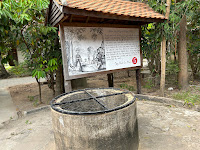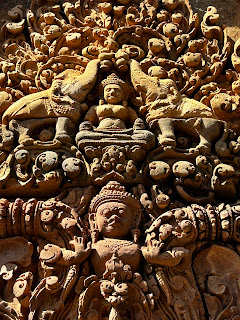Over tourism remains a topic of great debate. in an earlier post, I tried to understand what could be done about it (taxes, phase out, new destinations and so on) . Here, I wanted to explore another closely related issue : permissions and approvals.
Its easy and convenient to say tourists mess up , clog up and in general ruin the place. That in itself is a broad generalization and not always true.
But how and what enabled so many to visit so many areas for so many days?
Some key factors: local authorities, logistics and prosperity.
To start with, isn't it local authorities ( municipalities, state governments and national ministries) who allow the proliferation of short stay apartments?
How does a tourist enable / force / cause flats or apartments to be converted into short stay tourism accommodation without active support, frame work and planning by landlords and city authorities?
Does a tourist have any say in housing or zoning or public transport policies of the destination? Clearly, no.
In all the arguments raging across media, I don't find much debate on the role of authorities in allowing the shift of housing for locals into short stay for tourists (Barcelona did say they would ban all short stays, but after 4 years). They welcomed the money that came in ( both local landlords who rented out and governments who got taxes and income).
But perhaps it went overboard?
No one fault can be pinpointed here - it is the responsibility of authorities to grow their economies, and they simply used one economic lever. But then to turn around and blame transient visitors almost entirely for this problem is a bit rich. Local protestors would be aware of this. Surely they would be asking hard questions of their administrators.
The other enabler is of course, logistics or access. The expansion of low cost airlines suddenly opened up new destinations otherwise out of budget. Here again, landing / docking rights are the economic assets of the destination-its entirely there prerogative to control them. The tricky balance is to get more money in, without messing up the works- economic, cultural, business.
The third enabler is the growing prosperity of the middle classes elsewhere in the world that puts more money and enables them to travel, supported by vastly expanded air, sea and road links. In India, at least, foreign travel is no longer a luxury, The moment the young people have excess funds and/ time, they will travel. Its just part of being the new Global Indian culture and imagery that has crystalized over the past decade. And India isnt even the largest source markets for many tourism-troubled destinations- not yet.
Just look at India only (not even that other big source market - China) . 1400 mn people- of which the middle class would be 500mn. To put that into perspective- that would be more than the population of Scandinavia and most European countries, and quite big chunks of S/ S E Asia as well! Even if 10% of these 500mn are able to travel, that's 50mn. Europe holds the pride of place for every Indian- and even within Europe, certain destinations are always top of the list- Switzerland, UK, Spain, Portugal, Italy for sure, Next layer for the more discerning would be eastern and central Europe, and for the jaded Indian, Scandinavia/ Iceland.
Another interesting aspect is FOMO - the fear of missing out in travel and tourism. Just consider India again. With 65% of its population below 30 years and infrastructure still shoddy for tourism, the longing for the "first world lifestyle" means that a whole mass of people are traveling- and putting on social media that " they made it" . That perfect insta photo/ that perfect facebook post. It all adds to the allure of travel. Its a good thing in many ways for Indians - exposure, style, perspective, confidence. But only if done correctly.
The fourth enabler I would say are the investments into the tourism infrastructure by a lot of players, from hotels, to transport, to F&B and governments. The rapid expansion of chain hotels and Air B&B stays opened up vast accommodation options and allowed more stays for longer. Its a matter of another debate if hotels are better for a city or short stay rentals. Hotels are usually more expensive but offer a control point for the destination.
In sum, it was a perfect conjunction of circumstances and enablers that drove excessive tourism numbers. There are hard solutions in hand, and some soft, long term. But perhaps the travel industry will find its right, if an uneasy and flexible, balance sooner than later!









.JPG)


